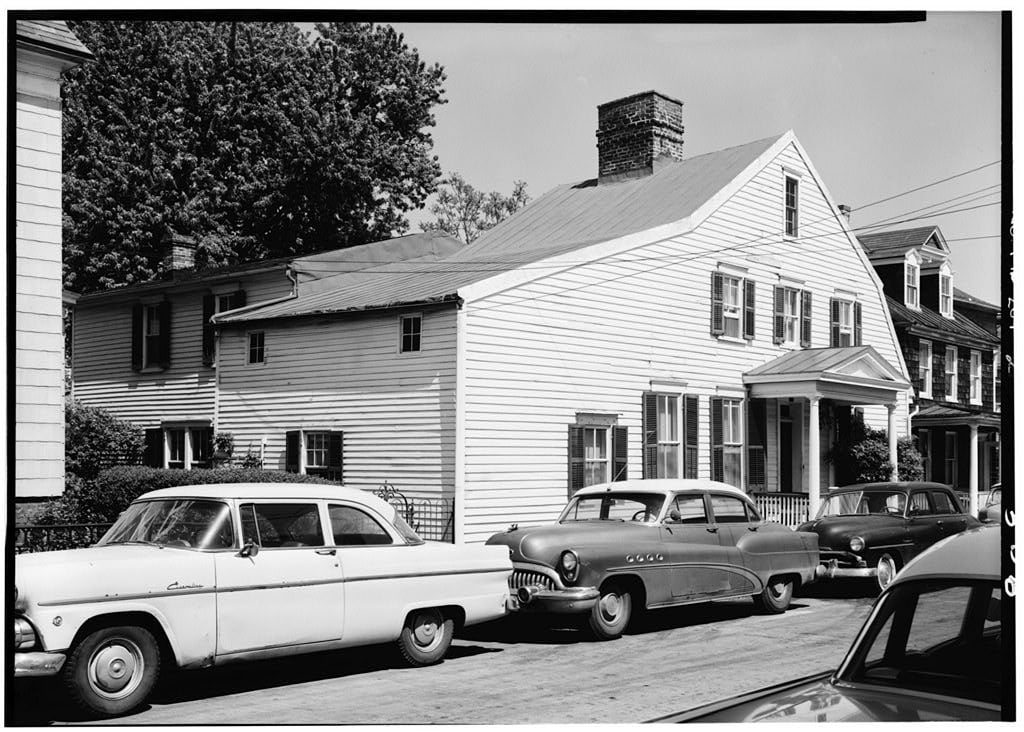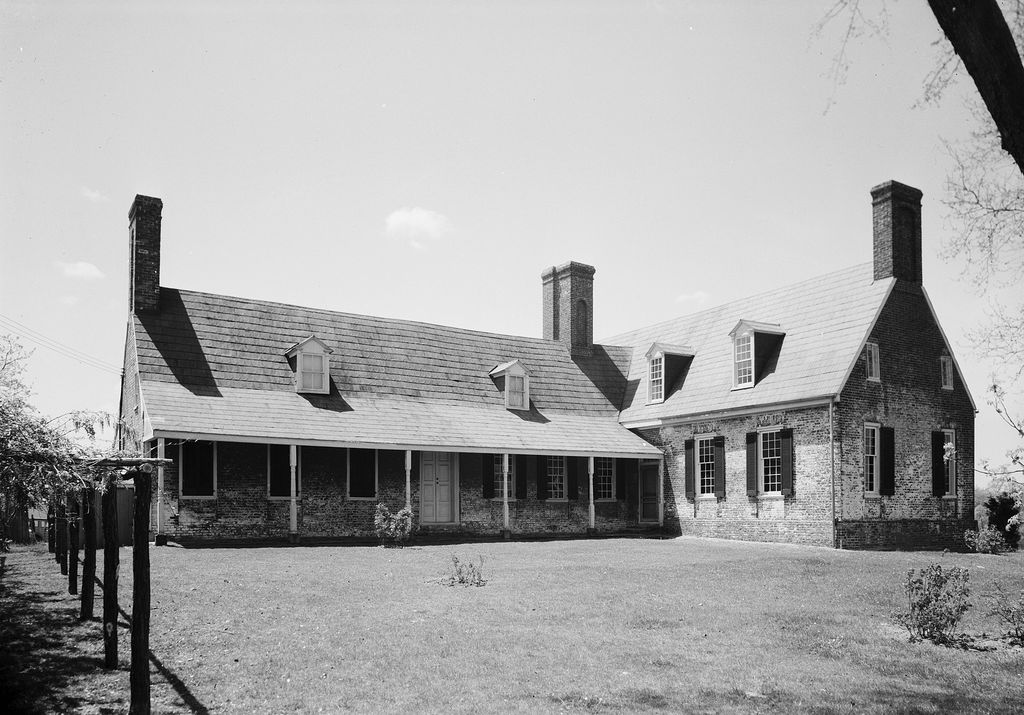Let’s dive into Maryland’s rich architectural past! We’re touring the ten of Maryland’s oldest homes, each a testament to time’s passage. These grand old houses aren’t just structures; they’re storybooks of the past, showcasing colonial grace and early craftsmanship. Imagine stepping into the shoes of those who first called these places home. As we wander through these age-old dwellings, we’ll uncover the beauty, strength, and stories they’ve kept alive. Ready to journey back in time? We’ll start with the “newest” of Maryland’s oldest homes!
Liriodendron (1897)
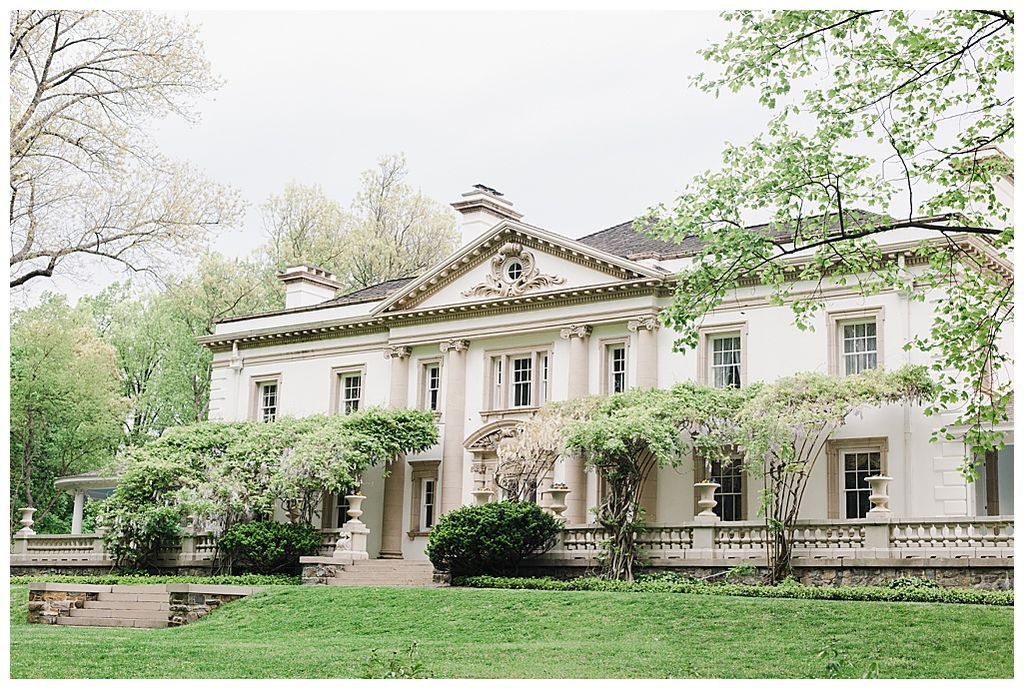
Photo By Katie Yoon of Kate Grace Photography via kategracephotography.com
Location
Bel Air, Maryland
Dated
1890’s
History
The Liriodendron is a historic estate in Bel Air, Maryland, originally owned by Dr. Howard Kelly, a renowned surgeon and one of the four founding physicians of the Johns Hopkins Medical College, and his wife Laetitia. Named after the tulip poplar (Liriodendron), the estate was purchased in the 1890s and originally spanned 196 acres, though it now consists of about 100 acres due to sales of portions of the land since the late 1940s. The property, bought for $12,000 on October 19, 1897, includes a Palladian mansion designed by the architectural firm Wyatt & Nolting. The estate features the main mansion, the Georgian-style Graybeal-Kelly House, a circa 1835 bank barn, a circa 1898 carriage house, a circa 1850 cottage, and other outbuildings. The mansion, completed in 1898, is built in the Georgian Revival style, marking a significant architectural and historical landmark in the region.
Dr. Howard Atwood Kelly
Dr. Howard Atwood Kelly was a multifaceted individual known for his significant contributions to medicine, science, and humanitarian efforts. Born in Camden, New Jersey, in 1858, he grew up influenced by his mother’s love for natural history and God. His education at the University of Pennsylvania was interrupted by health issues, leading him to spend time in the West as a cowboy, an experience that restored his health and instilled a lifelong appreciation for nature.
Kelly’s medical career was distinguished by his specialization in abdominal surgery and gynecology, pioneering the use of radium in cancer treatment, and his role in founding Johns Hopkins Medical College alongside other notable physicians. His innovative practices, including the adoption of white coats and skull caps in the hospital, marked a significant shift in medical protocols of the time.
A deeply religious man, Kelly often engaged in spirited debates with his friend H.L. Mencken, especially on topics related to religion. His marriage to Latitia Bredow and their life together, including the establishment of their summer home, the Liriodendron, in Bel Air, Maryland, reflected his dedication to family and his wife’s comfort.
Kelly’s interest in nature extended to keeping reptiles and studying mycology, contributions that earned him the title of Honorary Curator by The Division of Reptiles and Amphibians at the University of Michigan. He and his wife were also noted philanthropists, notably donating property to support soldiers returning from WWI.
Dr. Howard Atwood Kelly passed away in 1943, hours before his wife, marking the end of a life characterized by professional innovation, a passion for nature, and deep religious faith. The Liriodendron, now a historical site, continues to invite the public to explore the legacy of this remarkable figure.
Perry Point Mansion House (1750)
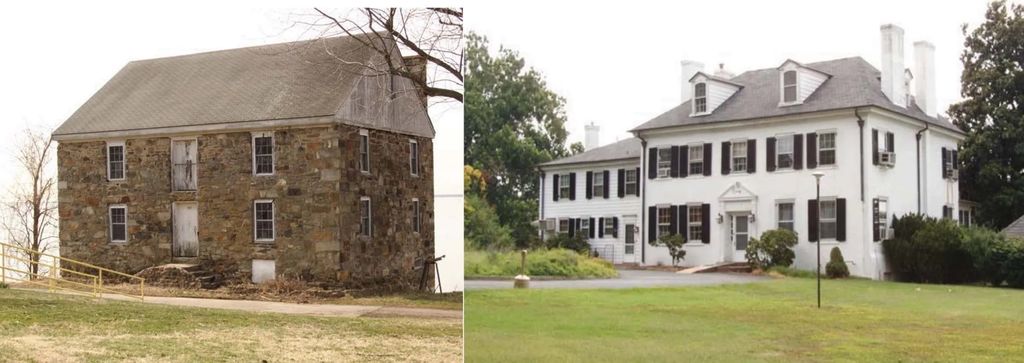
Location
Perryville, Maryland
Dated
Circa 1750
The Perry Point Mansion House and Mill, nestled in Cecil County, Maryland, holds a rich tapestry of American history that spans several centuries. The land, initially part of a grand 32,000-acre grant known as Susquehanna Manor by Lord Baltimore to his cousin George Talbot in around 1680, saw its first European inhabitant, John Bateman, by 1658 through a patent from Lord Baltimore. This early settlement, which would later become Perry Point, was named after Captain Richard Perry, who acquired it in 1710, though records suggest the name “Perry Point” predates his ownership.
The Mansion House, built around 1750, and the Grist Mill, of the same period, were significant for the settlement that flourished on the Point. The Mansion House, notable for its bricks brought over as ballast from England, and the Grist Mill, indicate the area’s early importance as a hub of activity and commerce. Over the years, the property saw various owners, including the Thomas family, who played a crucial role in its development during the 18th century.
The history of Perry Point took a dramatic turn during the Civil War when the Union Army used it as a training station for cavalry mules. This military significance continued when, during World War I, the U.S. Government purchased the property to build an ammonium nitrate plant critical for munitions. This plant, constructed by the Atlas Powder Company, quickly turned Perry Point into a bustling community with a village of 300 homes for its workers. However, the end of World War I marked a transition for Perry Point, as it was turned over to the U.S. Public Health Service and eventually became a facility focused on neuro-psychiatric care for veterans.
Today, the Perry Point VA Medical Center is a sprawling campus that offers a wide range of health care services to veterans, including inpatient, outpatient, and residential treatment. Despite modern developments, the Grist Mill and Mansion House remain preserved, with the Grist Mill now housing a museum that showcases Perry Point’s extensive history, from its early days as hunting grounds for the Susquehannock Indians to its current role in veteran care. These buildings, the oldest in the VA system, were recognized for their historic significance when they were placed on the National Register of Historic Places in 1975.
For more detailed history and the evolution of Perry Point from its colonial roots to a modern medical facility, visit the Perry Point Mansion House and Mill’s Wikipedia page and the VA History page.
Woodview/Gibson’s Ridge (1744)
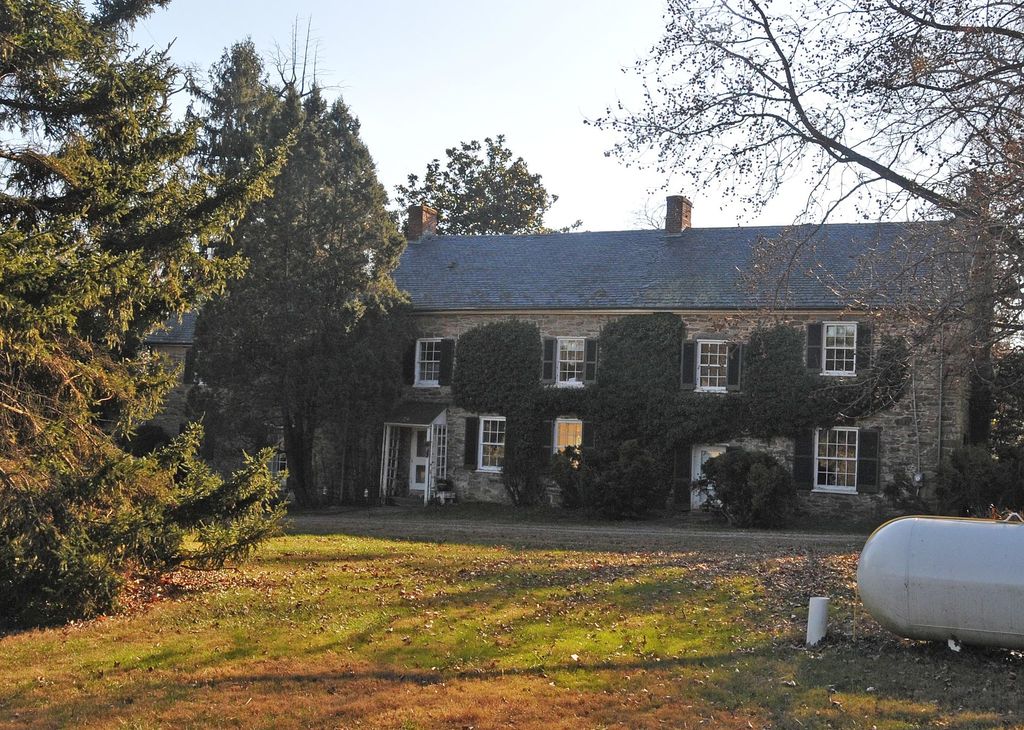
Location
Bel Air, Maryland
Dated
1744 (new wing added in 1820)
Woodview, also renowned as Gibson’s Ridge, in Bel Air, Harford County, Maryland, encapsulates a significant slice of American history with its Federal style architecture. Originating in 1744, this estate exemplifies early American dwelling styles through its stone construction and layout, featuring a main section and an 18th-century wing. The property is adorned with historical outbuildings, including a one-story 18th-century house and a 19th-century stone spring house, underscoring the architectural and historical richness of the area. Woodview’s inclusion on the National Register of Historic Places in 1990 highlights its importance in preserving Maryland’s architectural heritage.
Best Endeavor (1740)

Location
Churchville, Maryland
Dated
1740 (East portion of house added on in 1785.)
Nestled in Churchville, Harford County, Maryland, Best Endeavor, also known as Buena Vista Farm, is a historic estate that captures the architectural evolution and rural charm of the region. This property, with its origins in the mid to late 18th century, features a unique partially stuccoed stone telescope house that reflects various architectural styles from Federal to Greek Revival. The estate includes several significant outbuildings, such as a stone smokehouse and a frame barn, dating back to the mid-19th century. This site stands as a testament to the domestic vernacular architecture of Harford County, showcasing the rich historical tapestry of Maryland. For more detailed exploration, visit the Maryland Historical Trust website.
Sands House (1739)
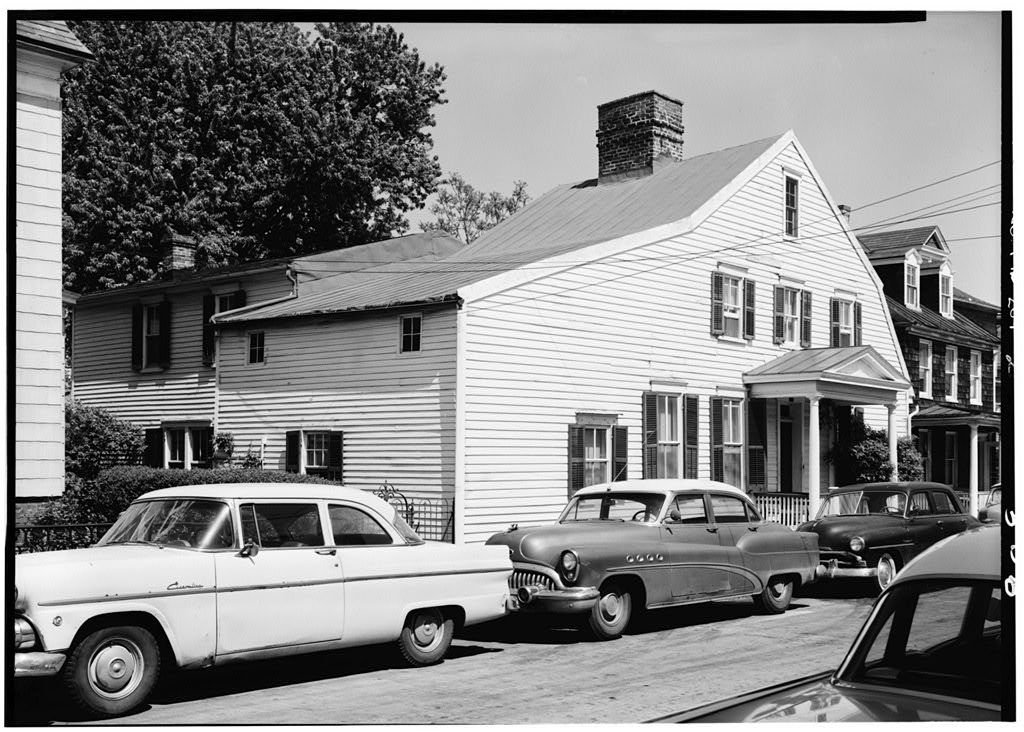
Location
Annapolis, Maryland
Dated
Circa 1700’s (Unconfirmed date of construction. Dendrochronology points to a date as early as 1681, but other sources point toward 1739. Historical marker inscribed with a c. 1700s date.)
The Sands House, a jewel in Annapolis, Maryland, offers a deep dive into colonial America’s architectural and social history. Dating back to the early 18th century, it’s a treasured glimpse into the past, nestled among cobblestone streets and close to the lively waterfront.
Its colonial architecture, with a simple yet elegant facade, wooden siding, and a pitched roof, showcases the era’s design. The house has been lovingly preserved, maintaining its original charm and welcoming vibe, echoing the lives of the families who lived there.
Inside, it’s a treasure trove of period furnishings and artifacts, telling the Sands family’s story and offering insights into colonial life in Maryland. From the kitchen’s hearth to the living rooms’ handcrafted furniture, every detail enriches the narrative of the past.
Beyond its architecture and collections, the Sands House plays a crucial role in Annapolis’s community. It’s a center for preservation efforts, offering guided tours, educational programs, and events that connect visitors with early American history.
Preserving the Sands House allows a journey back in time, celebrating Annapolis’s heritage. It stands as a beacon of history, inviting exploration, learning, and appreciation of the past’s continuity into the present. A must-visit for anyone interested in American history, colonial architecture, or Maryland’s story.
Brooms Bloom (1726)
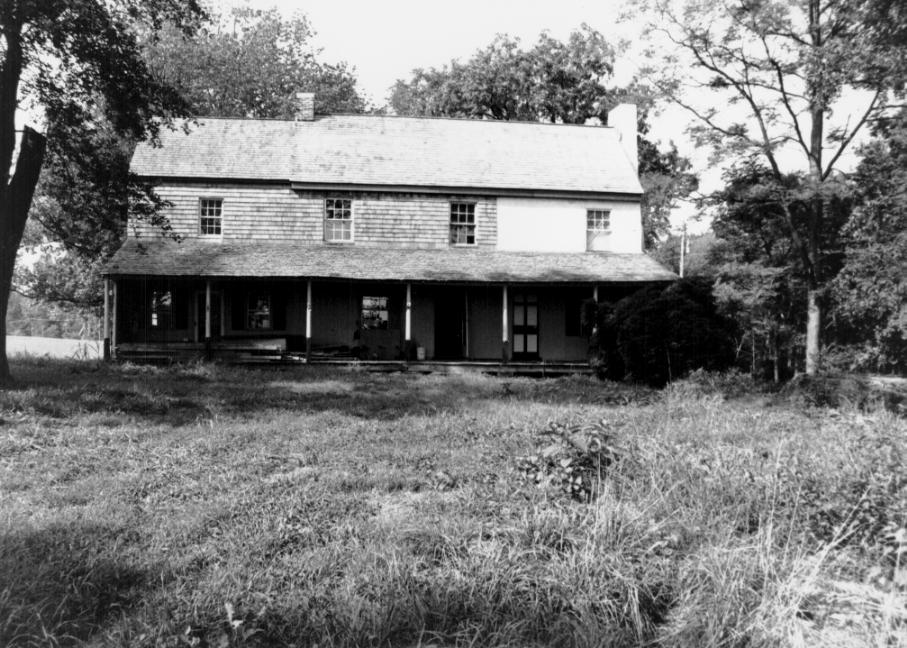
Photo By Christopher Weeks, 09/1991
Location
Bel Air, Maryland
Dated
1726 (It took its present form from four distinct and discernible periods of growth, from about 1747 to about 1950)
Nestled in the heart of Bel Air, Maryland, Broom’s Bloom Dairy stands as a testament to the blend of ancestral heritage and contemporary enterprise. This charming dairy farm, dating back to 1726, is proudly upheld by the ninth generation of the Dallam family, rooted deeply in the traditions of the colonial land grant named after John Broom. The name itself, “Broom’s Bloom,” evokes images of flourishing crops that sustained the land’s early settlers, embodying a legacy of nurturing and growth.
In 1997, David and Kate Dallam embarked on a journey to revive the family farm by beginning to milk 65 cows. This endeavor blossomed into the creation of old-fashioned ice cream, farmstead cheese, and pork sausage, all produced without the use of artificial growth hormones. Today, Broom’s Bloom Dairy is celebrated not only for its award-winning ice cream but also for its commitment to providing a natural diet of grains and forages to its animals.
The farm operates a cozy café and grocery where visitors can indulge in homemade ice cream and savor local foods. It has become a community hub, offering an array of local produce including milk, cheese, butter, yogurt, beef, lamb, pork, turkey, chicken, eggs, and more. Renowned for its crab soups, Broom’s Bloom Dairy invites guests to enjoy a delightful lunch on-site and take home dinner, making it a culinary landmark in Harford County.
This melding of history, family, and sustainable farming practices at Broom’s Bloom Dairy offers a unique glimpse into the heart of Maryland’s agricultural heritage. It stands as a beacon of local enterprise, inviting both locals and visitors to partake in the rich flavors and traditions of Harford County.
For more on the delicious offerings and the history behind Broom’s Bloom Dairy, you can explore their story further at Visit Maryland and Visit Harford.
Sarum (1717)

Location
Newport, Maryland
Dated
1717 (Constructed spring–summer 1717. Previously believed to be of 17th century origin)
Sarum in Newport, Maryland, is a historical marvel that dives deep into America’s past, showcasing colonial life and architecture. Built in the 18th century, it’s a prime example of the era’s design and craftsmanship, with an elegant facade that highlights classic brickwork, gabled roofs, and detailed interior woodwork.
The estate’s rich history is woven with the stories of its residents, reflecting their impact on the community and the nation. These personal tales, against the backdrop of major historical events, enrich Sarum’s legacy, making it a vibrant part of American heritage.
The grounds of Sarum are as captivating as the main house, featuring gardens, paths, and echoes of past agricultural practices. These elements invite visitors to explore and connect with the estate’s historical landscape and architectural beauty.
Sarum is a testament to Maryland’s colonial and early American history, offering insights into the era’s social, architectural, and economic aspects. It serves as an educational and cultural hub, with tours and programs that engage the public with America’s rich heritage.
For enthusiasts of architecture, history, or societal evolution, Sarum presents an intriguing exploration of time, architecture, and stories. As a preserved site, it continues to link the past with the present, enriching our understanding of American history and its diverse narratives.
Melwood Park (1714)
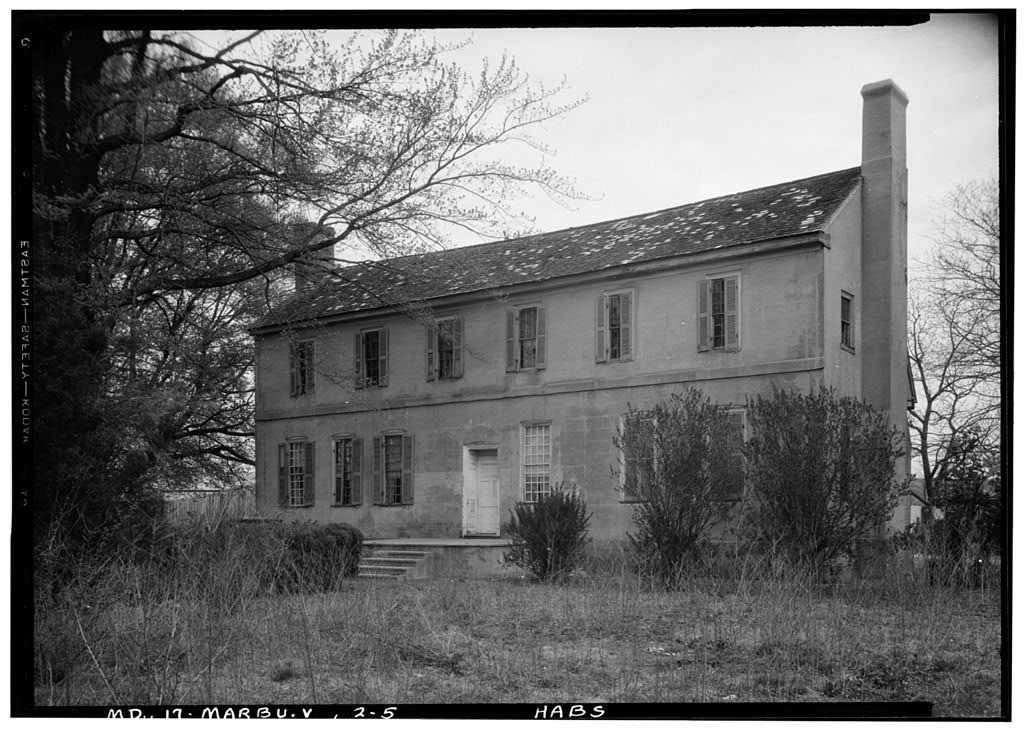
Location
Prince Georges County, Maryland
Dated
1714 (Originally thought to date to 1720s, but dendrochronology moved it back over a decade.)
Melwood Park, nestled in Prince George’s County, Maryland, is a historic gem dating back to the 18th century. This landmark, with its grand Georgian-style mansion and sprawling lands, offers a deep dive into the architectural and social evolution of the region, mirroring the shifts in American society and design over centuries.
The mansion, known for its elegant Georgian architecture, showcases a symmetrical facade, refined proportions, and a classical balance. Its brick exterior and decorative elements highlight the era’s craftsmanship and aesthetic ideals. Inside, period furnishings, intricate woodwork, and historical artifacts narrate the lives and legacy of its residents, anchoring it firmly in Maryland’s historical narrative.
Melwood Park’s history is as rich as its architecture, playing roles in local and national events across various eras—from colonial times through the Revolutionary War to today. It has been a private abode, a gathering spot for social and political events, each phase enriching its historical tapestry.
The estate’s grounds, with their beautiful gardens, ancient trees, and open spaces, offer peaceful exploration and reflection, complementing the mansion’s grandeur with a serene backdrop that echoes the complexity of its history.
Today, Melwood Park stands as a vital cultural and educational resource, a testament to preservation efforts that keep it a live connection to Maryland’s past. Hosting tours, events, and educational programs, it educates visitors about the importance of preserving historical landmarks, fostering an appreciation for the legacy they carry.
Melwood Park is more than just a historical site; it’s a narrative of Maryland’s heritage, blending architectural elegance, historical depth, and generational continuity. It’s a tribute to the past, a beacon for the present, and a legacy for the future, offering a rich, enlightening experience for historians, architecture buffs, and anyone drawn to the American story.
Holly Hill (1698)
Location
Friendship Maryland
Dated
Original Structure – 1698, First addition/upgrade – 1713, Second addition/upgrade – 1730
Holly Hill in Friendship, Maryland, is a gem that screams American history and pastoral elegance. Dating back to the late 18th century, this estate is a historical masterpiece surrounded by Maryland’s stunning landscapes.
Its main house, a beacon of Georgian architecture, boasts a symmetrical design and classic charm. The welcoming entrance and sprawling gardens set the stage for a dive into its rich past and beauty. Inside, Holly Hill marries history with the present. Rooms filled with antiques and heirlooms tell tales of yesteryears. Polished floors and detailed moldings add warmth, offering a peek into Maryland’s genteel past.
The estate’s exterior is equally captivating. Landscaped gardens and ancient trees create a serene haven. Preserved outbuildings like the carriage house and stables give a glimpse into historic estate life.
But Holly Hill isn’t stuck in the past; it’s a lively community spot in Friendship. Hosting events from reenactments to festivals, it brings history alive, connecting visitors with the area’s heritage.
For fans of historic architecture, antebellum charm, and tranquil countryside, Holly Hill is a must-visit. A symbol of Maryland’s historical wealth, it offers a serene journey back in time. A haven for history buffs, nature enthusiasts, or those seeking calm, Holly Hill invites you to explore its timeless allure and historical depth.
Brooke Place Manor (1652)
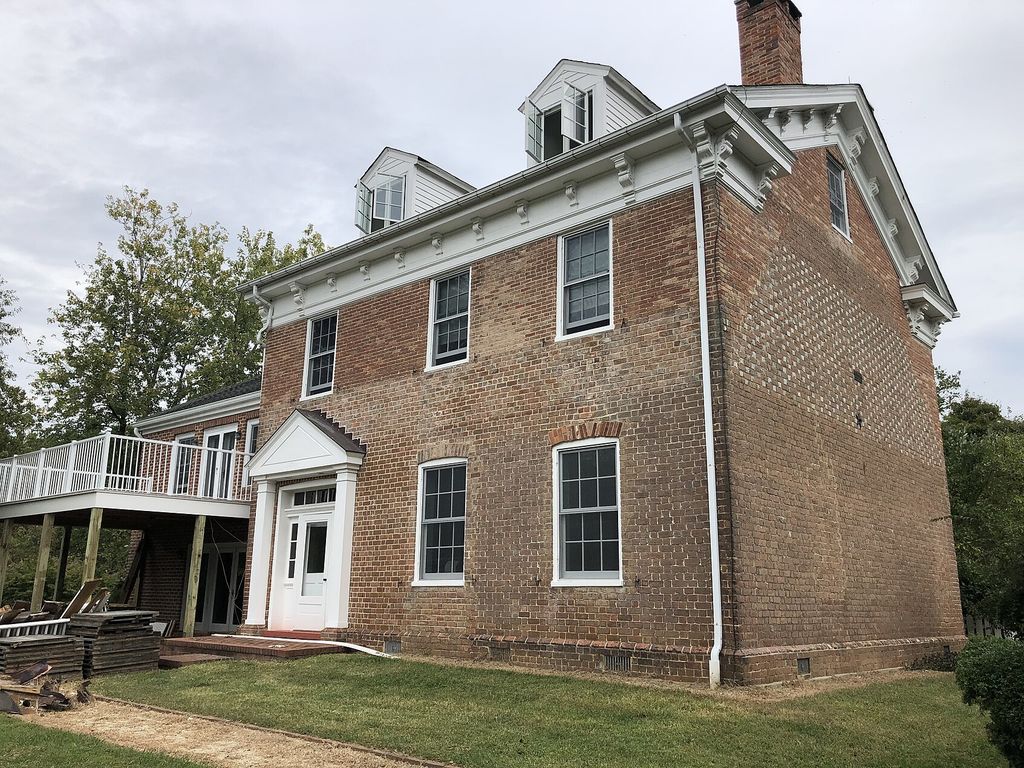
Location
St. Leonard, Maryland
Dated
1652
This manor house stands as one of the state’s earliest, crafted from Flemish bond brick. Initially built in the early 17th century as a 1-1/2 story building with a steep A-shaped roof, it underwent expansion in the 1840s into a 2-1/2 story Greek Revival structure featuring a more gently sloping A-roof. Constructed by Robert Brooke, Sr, this historic home remains on 100 acres of the original 2,100-acre land awarded to him in 1649 by Cecil Calvert, the 2nd Lord Baltimore.
Brooke Place Manor, nestled in Maryland, screams history and architectural beauty. Dating back to the early 19th century, it’s a classical marvel. Surrounded by natural splendor, its manicured gardens and grand facade welcome all.
Step inside, and it’s like time travel. Each room, with its antique charm and ornate decor, tells a rich story. The grand staircase, a masterpiece of woodwork, leads to bedrooms that showcase a bygone lifestyle.
The estate’s grounds are a treat for nature buffs and history enthusiasts. Its carefully designed gardens bloom seasonally, offering a color spectacle. Old outbuildings and farm remnants hint at past agricultural life.
Brooke Place Manor isn’t just a relic; it’s a vibrant cultural spot. Hosting events from history tours to cultural celebrations, it brings Maryland’s past alive. It’s a place where stories are shared, and heritage is celebrated.
A visit to Brooke Place Manor is a journey through Maryland’s historical and architectural wonders. Perfect for history lovers, architecture fans, or those seeking tranquility, it offers an enlightening, enchanting experience.
